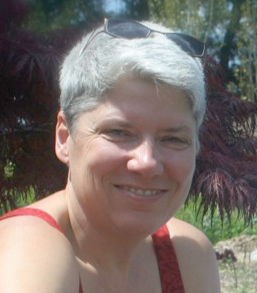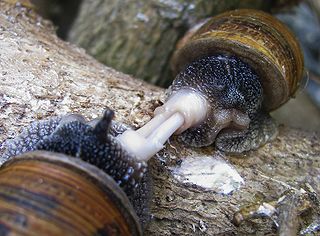Related Research Articles

The Intersex Society of North America (ISNA) was a non-profit advocacy group founded in 1993 by Cheryl Chase to end shame, secrecy, and unnecessary genital surgeries on intersex people. Other notable members included Morgan Holmes, Max Beck, Howard (Tiger) Devore, Esther Morris Leidolf and Alice Dreger. The organization closed in June 2008, and has been succeeded by a number of health, civil and human rights organizations including interACT.

Intersex medical interventions (IMI), sometimes known as intersex genital mutilations (IGM), are surgical, hormonal and other medical interventions performed to modify atypical or ambiguous genitalia and other sex characteristics, primarily for the purposes of making a person's appearance more typical and to reduce the likelihood of future problems. The history of intersex surgery has been characterized by controversy due to reports that surgery can compromise sexual function and sensation, and create lifelong health issues. The medical interventions can be for a variety of reasons, due to the enormous variety of the disorders of sex development. Some disorders, such as salt-wasting disorder, can be life-threatening if left untreated.

The history of intersex surgery is intertwined with the development of the specialities of pediatric surgery, pediatric urology, and pediatric endocrinology, with our increasingly refined understanding of sexual differentiation, with the development of political advocacy groups united by a human qualified analysis, and in the last decade by doubts as to efficacy, and controversy over when and even whether some procedures should be performed.

Bo Laurent, better known by her pseudonym Cheryl Chase, is an American intersex activist and the founder of the Intersex Society of North America. She began using the names Bo Laurent and Cheryl Chase simultaneously in the 1990s and changed her name legally from Bonnie Sullivan to Bo Laurent in 1995.
Ovotesticular syndrome is a rare congenital condition where an individual is born with both ovarian and testicular tissue. It is one of the rarest DSDs, with only 500 reported cases. Commonly, one or both gonads is an ovotestis containing both types of tissue. Although it is similar in some ways to mixed gonadal dysgenesis, the conditions can be distinguished histologically.
Pseudohermaphroditism is an outdated term for when an individual's gonads were mismatched with their internal reproductive system and/or external genitalia. The term was contrasted with "true hermaphroditism", a condition describing an individual with both female and male reproductive gonadal tissues. Associated conditions includes Persistent Müllerian duct syndrome and forms of androgen insensitivity syndrome.

Disorders of sex development (DSDs), also known as differences in sex development or variations in sex characteristics (VSC), are congenital conditions affecting the reproductive system, in which development of chromosomal, gonadal, or anatomical sex is atypical. DSDs is a clinical term used in some medical settings for what are otherwise referred to as intersex traits. The term was first introduced in 2006 and has not been without controversy.

A hermaphrodite is a sexually reproducing organism that produces both male and female gametes. Animal species in which individuals are either male or female are gonochoric, which is the opposite of hermaphroditic.

Intersex people are individuals born with any of several sex characteristics, including chromosome patterns, gonads, or genitals that, according to the Office of the United Nations High Commissioner for Human Rights, "do not fit typical binary notions of male or female bodies".
Accord Alliance was founded in March 2008 to support a dialogue on intersex patients and their care. They are a hosted project of the Tides Center, an organization that supports non-profit groups. Their stated mission is to promote comprehensive and integrated approaches to care that enhance the health and well-being of people and families affected by disorders of sex development. DSD is a term contested by some activists. Cheryl Chase, founder of the Intersex Society of North America, was a founding member on the advisory board.
Tiger Devore, previously known as Howard Devore and Tiger Howard Devore, is an American clinical psychologist, sex therapist, and spokesperson on intersex issues. He was a member of the defunct Intersex Society of North America. Historian Alice Dreger credits him with starting the work of the intersex movement.

Intersex, in humans and other animals, describes variations in sex characteristics including chromosomes, gonads, sex hormones, or genitals that, according to the UN Office of the High Commissioner for Human Rights, "do not fit typical binary notions of male or female bodies".
The Phall-O-meter is a satirical measure that critiques medical standards for normal male and female phalluses. The tool was developed by Kiira Triea based on a concept by Suzanne Kessler and is used to demonstrate concerns with the medical treatment of intersex bodies.

Intersex, in humans and other animals, describes variations in sex characteristics including chromosomes, gonads, sex hormones, or genitals that, according to the UN Office of the High Commissioner for Human Rights, "do not fit typical binary notions of male or female bodies". Intersex people were historically termed hermaphrodites, "congenital eunuchs", or even congenitally "frigid". Such terms have fallen out of favor, now considered to be misleading and stigmatizing.

Intersex people are born with sex characteristics, such as chromosomes, gonads, or genitals and secondary sex characteristics that, according to the UN Office of the High Commissioner for Human Rights, "do not fit typical binary notions of male or female bodies".
Max Beck was an American intersex advocate, who was active in the now-defunct Intersex Society of North America (ISNA). On October 26, 1996 in Boston, Beck participated in the first known public demonstration against human rights violations on intersex people. The event is now annually commemorated and recognized as Intersex Awareness Day.

Intersex people in the United States have some of the same rights as other people, but with significant gaps, particularly in protection from non-consensual cosmetic medical interventions and violence, and protection from discrimination. Actions by intersex civil society organizations aim to eliminate harmful practices, promote social acceptance, and equality. In recent years, intersex activists have also secured some forms of legal recognition. Since April 11, 2022 US Passports give the sex/gender options of male, female and X by self determination.

The (DoDI) 6130.03, 2018, section 5, 13f and 14m is the writing which bars persons with "true hermaphroditism", "pseudohermaphroditism" and "pure gonadal dysgenesis" from serving in the United States Armed Forces. The three are all intersex conditions and are as of now considered to be medically incompatible with military service in the United States. "DoDI" stands for "Department of Defense Instruction," the 6130.03 instruction concerns "Medical Standards for Appointment, Enlistment, or Induction in the Military Services" in the Armed Forces of the United States. Section 5 focuses on disqualifying conditions of the male and female reproductive system, on the female page the subheader 13 and paragraph f name true hermaphroditism, pseudohermaphroditism and pure gonadal dysgenesis specifically, and on the male page the subheader 14 and paragraph m also name exactly true hermaphroditism, pseudohermaphroditism and pure gonadal dysgenesis, respectively. There is no differentiation made between males and females with these conditions. Many doctors, medical professionals and intersex advocates find the terms hermaphroditism to be outdated and stigmatized, therefore it and its derivative words are seldom used in the 2000s, with the word hermaphrodite itself being considered a slur when used against a human.

Eric Vilain is a physician-scientist and professor in the fields of differences of sex development (DSDs) and precision medicine. He is the Associate Vice Chancellor for Scientific Affairs at the University of California, Irvine Health Affairs and also the director of the UCI Institute for Clinical and Translational Science. He previously was the director of the Center for Genetic Medicine Research at Children's National Medical Center and the chair of the Department of Genomics and Precision Medicine at the George Washington University School of Medicine & Health Sciences in Washington, D.C. Vilain is a fellow of the American College of Medical Genetics, serves on the International Olympic Committee's Medical Commission, and sits on the Board of Scientific Counselors for the National Institute of Child Health and Human Development (NICHD).

Various criteria have been offered for the definition of intersex, including ambiguous genitalia, atypical genitalia, and differential sexual development. Ambiguous genitalia occurs in roughly 0.05% of all births, usually caused by masculinization or feminization during pregnancy, these conditions range from full androgen insensitivity syndrome to ovotesticular syndrome.
References
- ↑ "Hermaphrodites with Attitude". Intersex Society of North America. Archived from the original on August 14, 2013. Retrieved September 26, 2013.
- ↑ "Hermaphrodites with Attitude" (PDF). Hermaphrodites with Attitude. 1 (1). Intersex Society of North America. 1994. Archived (PDF) from the original on September 10, 2016. Retrieved February 16, 2017.
- ↑ Valocchi, Stephen; Corber, Robert J. (2003). Queer studies : an interdisciplinary reader. Oxford: Blackwell. ISBN 0631229167.
- ↑ Dreger, Alice Domurat (1999). Intersex in the age of ethics . Hagerstown, MD.: Univ. Publ. Group. ISBN 1555721001.
- ↑ Chase, Cheryl (1998). "Hermaphrodites with Attitude: Mapping the Emergence of Intersex Political Activism". GLQ: A Journal of Lesbian and Gay Studies. 4 (2): 189–211. doi:10.1215/10642684-4-2-189. Archived from the original on August 4, 2024. Retrieved September 26, 2013.
- ↑ Preves, Sharon (August 16, 2003). "Hermaphrodites With Attitude: The Intersex Patients' Rights Movement and Clinical Reform". American Sociological Association.
- ↑ Valentine, David; Wilchins, Riki Anne (1997). "One Percent on the Burn Chart: Gender, Genitals, and Hermaphrodites with Attitude". Social Text (52/53): 215–222. doi:10.2307/466740. JSTOR 466740.
- ↑ Beck, Max (1997). "Hermaphrodites with Attitude Take to the Streets". Chrysalis: Journal of Transgressive Gender Identities. 2 (5): 45–46. ISSN 1086-4873. Archived from the original on October 5, 2015. Retrieved February 16, 2017.
- 1 2 "ISNA News" (PDF). ISNA News (February 2001). Intersex Society of North America. Archived (PDF) from the original on April 4, 2016. Retrieved February 16, 2017.
- ↑ Koyama, Emi (February 2006). "From "Intersex" to "DSD": Toward a Queer Disability Politics of Gender". University of Vermont. Archived from the original on September 28, 2015. Retrieved February 16, 2017.
- ↑ "Is a person who is intersex a hermaphrodite?". Intersex Society of North America. Archived from the original on July 1, 2013. Retrieved June 29, 2014.
- 1 2 "Getting Rid of "Hermaphroditism" Once and For All". Intersex Society of North America. Archived from the original on September 27, 2011. Retrieved June 29, 2014.
- ↑ Dreger, AD; Chase, C; Sousa, A; Gruppuso, PA; Frader, J (August 2005). "Changing the nomenclature/taxonomy for intersex: a scientific and clinical rationale". Journal of Pediatric Endocrinology & Metabolism. 18 (8): 729–33. doi:10.1515/jpem.2005.18.8.729. PMID 16200837. S2CID 39459050.
- ↑ "Dear ISNA Friends and Supporters". Intersex Society of North America. Archived from the original on August 3, 2008. Retrieved June 29, 2014.
- ↑ Quigley, Charmian (2014). "A Brief History". AIS-DSD Support Group. Archived from the original on April 27, 2015. Retrieved January 15, 2017.
- 1 2 3 Karkazis, Katrina (2008). Fixing Sex: Intersex, Medical Authority, and Lived Experience . Duke University Press. p. 260. ISBN 978-0-8223-4318-9.